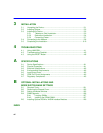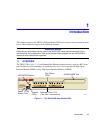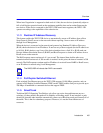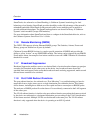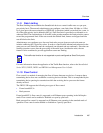
Overview
1-2 Introduction
The 2H253-25R is used to connect individual high-bandwidth user devices, such as workstations,
or to provide a central switching point for multiple 10/100 Mbps Fast Ethernet segments. The
optional HSIMs provide high speed uplinks to networking technologies such as Fast Ethernet,
Gigabit Ethernet, Fiber Distributed Data Interface (FDDI), Wide Area Network (WAN), and
Asynchronous Transfer Mode (ATM). Some HSIMs can provide additional Fast Ethernet ports in
varying media types. The optional VHSIMs provide very high speed uplinks to networking
technologies such as Gigabit Ethernet and ATM.
The 2H253-25R ports can be configured to control frame traffic in several ways, including
prioritizing traffic flow according to protocol type. The 2H253-25R can also be configured to
establish Virtual Local Area Networks (VLANs) and control the flow of frames associated with
each VLAN according to priority and Ether type. Detailed information about VLANs is provided
in the Cabletron Systems 802.1Q VLAN User’s Guide.
The 2H253-25R may be used as a tabletop unit or can be installed in a standard 19-inch rack using
the supplied rack mounting hardware.
The 2H253-25R has two power supplies. The power supplies load share 50% (+/-5%) of the power
required by the device. If one power supply fails, the remaining power supply assumes the entire
load of the device without interruption to network traffic. Each power supply module supports its
own ac input connection, which enables each power supply to be connected to a different ac power
circuit.
1.1.1 Connectivity
The 2H253-25R connects to Ethernet networks or workstations through two RJ21 ports on the
front panel. Each RJ21 connector contains 12, 10/100 Mbps Ethernet ports. These ports are IEEE
802.3 10BASE-T and IEEE 802.3u 100BASE-TX compliant, and they support Category 3
(10-Mbps operation only) and Category 5 Unshielded Twisted Pair cabling. The Category 5
cabling must have an impedance of between 85 and 111 ohms at lengths up to 100 meters.
The device also has a slot for an optional HSIM or VHSIM to provide additional connectivity to
various networking technologies.
1.1.2 Auto-Negotiation
The fixed twisted pair ports (1 through 24) on the 2H253-25R have the ability to auto-negotiate the
type of connection required to provide a link to another device. During Auto-Negotiation, two
devices automatically exchange information so they know each others operating capabilities. The
Auto-Negotiation feature targets the maximum capabilities that can be reached between the two
devices. For example, the 2H253-25R can adjust to 100 Mbps when the device on the other end of
the connection can also adjust from 10 Mbps to 100 Mbps. If the device on the other end of the
connection can only operate at 10 Mbps, then the 2H253-25R simply adjusts to operate at
10 Mbps.



